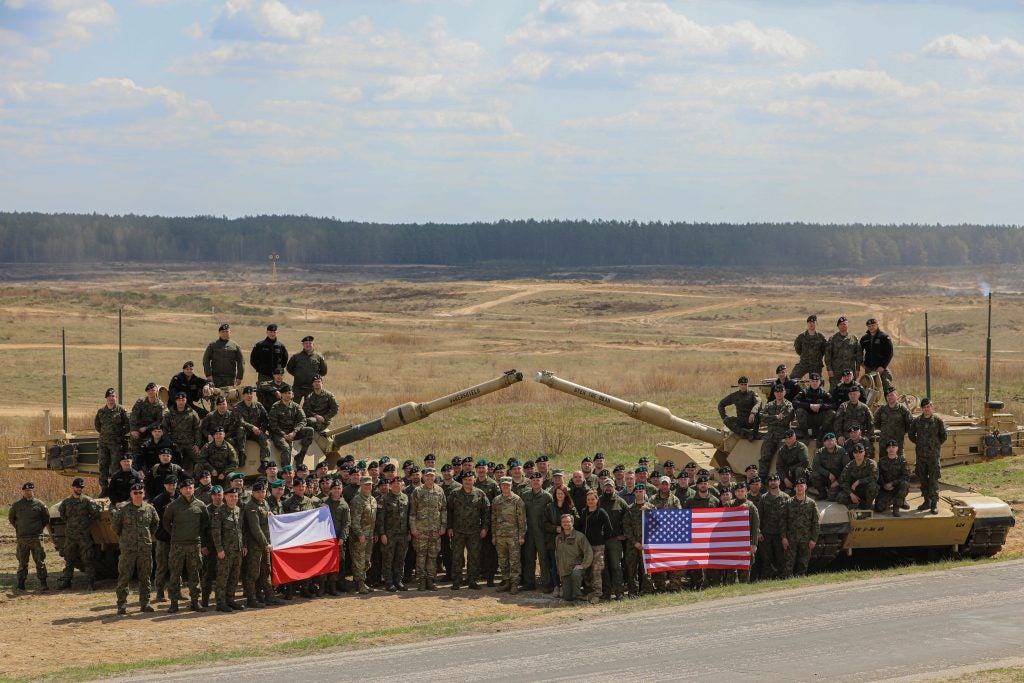What Will Replace Poland’s T-72s?
In mid-April an estimated number of 230 main battle tanks (MBT), an equivalent to 4 tank battalions, were donated to Ukraine as a part of the Polish contribution to aid the fight against Russian aggression. According to a UN report from 2019, Poland had 382 T-72M/M1 tanks, however, a large portion of them were not operational due to wear and tear, a lack of parts, and no resources to repair them. This may mean that the 230 T-72M, T-72MR, and T-72M1Rs represent Poland’s entire operational T-72 fleet.
If this is the case it represents end of T-72 use in the Polish Armed Forces after almost 40 years of service. This also means a significant depletion of the Polish tank force, though this is mainly a numerical factor as the combat capability of these old Soviet tanks, without modern systems, can be disputed. This will have a significant impact on the structure of the Polish Armed Forces until new tanks are delivered, especially with the recent plan to expand the army’s numbers.
Poland continue to operate with Leopard 2A5, Leopard 2PL, Leopard 2A4, and PT-91 (a locally modernized T-72 variant), and will soon begin to receive 250 M1A2 SEP v3 Abrams tanks. While the transfer means that 3 rather than 4 types of tanks are now in service, the current Abrams will not cover the shortfall and new vehicles will need to be procured.
When talking about the T-72 replacement, the subject of PT-91 cannot be overlooked. It is another complication to the puzzle of how to provide a sufficient amount of new MBTs for the Polish Armed Forces. The transferred 230 T-72s and later a further 230 PT-91s, which began to be delivered in 1995, will eventually have to be replaced in the foreseeable future. This represents the equivalent of 8 tank battalions (each battalion equipped with 58 tanks). The delivery of M1A2 SEP v3 Abrams does not solve the issue, as these will only rotate the Leopard 2 equipped battalions from the 1st Armored Brigade in Warsaw to the 10th and 34th Armored Brigades in Western Poland. So what are the options?
More Leopard 2s?

Soon after the T-72s were delivered to Ukraine, the Polish government sent an inquiry about the possible transfer of Leopard 2 tanks from Bundeswehr stockpiles to Poland. The request, however, remains unanswered and discussions reportedly continue. The German Army is currently looking to increase its own tank numbers. It is doubtful whether any Leopard 2 tanks even remain in the Bundeswehr stockpile, while the producer, KMW, is still unable to deliver new vehicles in sufficient numbers.
The WILK Program Steps In?

Another possibility existing on the market is the Korean Hyundai-Rotem with its K2 MBT. The talks have been dragging for years now with no clear results or declarations from both parties. The WILK program would originally have seen the Polish T-72s and PT-91s replaced by K2s. It seems that the Polish government has not been very keen to pursue the Korean proposal. However, the present situation could lead to a change of heart. In fact, Hyundai Rotem may be the only company able to provide Poland with the replacement tanks it needs, much sooner than Abrams from General Dynamics.
500 M1A2 SEP v3s?

U.S. Army photo released by Spc. Marcus A. Floyd, 7th Mobile Public Affairs Detachment
There is the last option on the table for Poland. A second batch of Abrams could solve the issue. If pursued it would mean that by the end of this decade, the Polish Armed Forces could effectively utilize only two types of tanks; Leopard 2 variants and M1A2s, making it one of the World’s most modern tank fleets. The catch is whether the US is ready to prioritize Poland as the receiver of its newest tanks. General Dynamics production lines are already busy with orders from United States Army and the National Guard. The production capacity to fit another 250 MBTs may be difficult if not impossible to find.
Considering all options on the table, the offer of General Dynamics could be the best solution, as it would unify the Polish tank fleet and bring interchangeability between Polish and US armored brigades. However, Hyundai may bring some economic incentives to the table that could outplay the proposal of the second batch of Abrams tanks. The procurement of further tanks to replace transfered T-72s and other aging assets will no doubt remain an urgent priority for the Polish government and armed forces as their modernization program continues.

